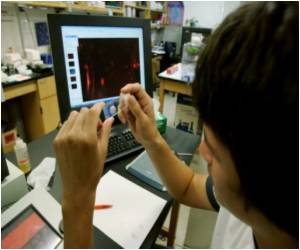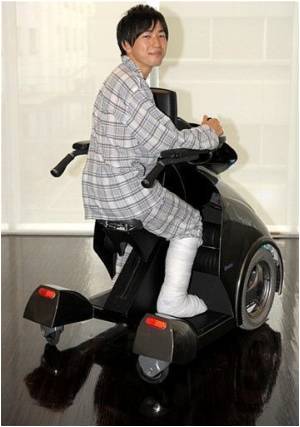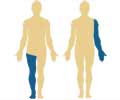As a result of a novel therapy that involves electrical stimulation of the spinal cord, four people with paraplegia are able to voluntarily move previously paralyzed muscles.

"When we first learned that a patient had regained voluntary control as a result of spinal stimulation, we were cautiously optimistic," said Roderic Pettigrew, Ph.D., M.D., director of the National Institute of Biomedical Imaging and Bioengineering (NIBIB) at NIH, which provided support for the study. "Now that spinal stimulation has been successful in 4 out of 4 patients, there is evidence to suggest that a large cohort of individuals, previously with little realistic hope of any meaningful recovery from spinal cord injury, may benefit from this intervention."
One of the most impressive and unexpected findings of the study is that two of the patients who benefited from the spinal stimulation had complete motor and sensory paralysis. In these patients, the pathway that sends information about sensation from the legs to the brain is disrupted, in addition to the pathway that sends information from the brain to the legs in order to control movement. The researchers were surprised by the outcome; they had assumed that at least some of the sensory pathway needed to be intact for the therapy to be effective.
The study is the continuation of a groundbreaking pilot trial initiated in 2009 to determine whether spinal stimulation, in conjunction with daily training on a treadmill, could help patients with paralysis regain some ability to move. In that trial, Rob Summers, a young man paralyzed below his chest, had a 16-electrode array implanted on his spinal cord. He then underwent daily training in which he was suspended in a harness over a treadmill while a team of researchers supported his legs, helping him to either stand or walk. At the same time, the array delivered electrical pulses to his spinal cord just below his injury.
According to the researchers, the goal of the stimulation was to increase the sensitivity of local circuits within the spinal cord that carry out basic motor functions without input from the brain—such as the knee jerk that occurs after stepping on a tack, or even more complex patterned movements like stepping. While not strong enough to directly induce muscle activation by itself, the researchers believed the stimulation could lead to movement when combined with sensory input from stepping on a treadmill.
With his stimulator active, Summers was able to gradually bear his own weight and could eventually stand without assistance from physical therapists for up to four minutes. Surprisingly, seven months into the trial, Summers also discovered that he had regained some voluntary control of his legs. The researchers were amazed by this latter outcome, as intentional movement requires information to travel from the brain down to the lower spinal cord, a path that had been rendered nonfunctional by his injury. Other impairments caused by Summers' injury also began to improve over time, in the absence of stimulation, such as blood pressure control, body temperature regulation, bladder control, and sexual function.
Advertisement
Source-Eurekalert












